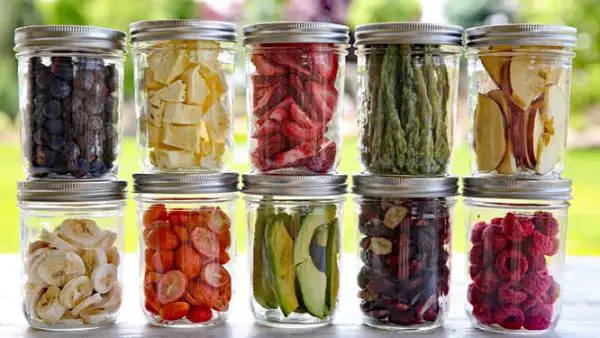The Rise of Dehydrated Food: A Convenient and Nutritious Solution
Dehydrated food has become increasingly popular in recent years due to its convenience, longer shelf life, and nutritional benefits. In this blog, we will explore the world of dehydrated food and why it is a great option for people who want to eat healthily and save time.
What is Dehydrated Food?
Dehydrated food is food that has had its moisture removed through a drying process. This process removes the water content from the food, which helps to preserve it and extend its shelf life. Dehydrated food can be stored for months or even years without spoiling, making it an excellent option for people who want to stock up on food supplies.
How is Dehydrated Food Made?

Image: Source
There are various methods for dehydrating food, including air drying, sun drying, and using a dehydrator. Air drying involves laying out the food in the sun or in a warm, dry place until the moisture evaporates. Sun drying involves using the sun’s heat to dry the food while using a dehydrator is a more controlled method that uses low heat and a fan to dry the food. Sometimes food colors are added to enhance the visual appearance of dehydrated foods. To know more about food colors, reach out to your nearest food color manufacturers.
Once the food is dehydrated, it can be packaged and stored for future use. Dehydrated food can be rehydrated by adding water or other liquids, such as broth or milk.
Benefits of Dehydrated Food
Dehydrated food has several benefits, including:
Convenience: Dehydrated food is lightweight, easy to store, and doesn’t require refrigeration. This makes it a great option for camping trips, hiking, and other outdoor activities.
Nutritional Value: Dehydrated food retains most of its nutrients during the drying process, making it a healthy option for people who want to eat a balanced diet.
Longer Shelf Life: Dehydrated food can be stored for months or even years without spoiling. This makes it an excellent option for people who want to stock up on food supplies.
Cost Effective: Dehydrated food is often less expensive than fresh or frozen food, making it a great option for people who want to save money on their grocery bills.
Dehydrated Food Recipes
Dehydrated food can be used in a variety of recipes, including soups, stews, and casseroles. It can also be used as a snack, such as dried fruits or vegetables.
To make a simple dehydrated meal, you can mix dehydrated vegetables, meat, and seasoning in a resealable bag. When you’re ready to eat, simply add hot water, and you’ll have a delicious, hot meal in minutes.
Safety Concerns
While dehydrated food is generally safe to eat, there are some safety concerns to be aware of. Improperly dehydrated food can lead to the growth of bacteria and mold, which can cause food poisoning. It’s important to follow proper dehydration methods and storage guidelines to prevent foodborne illness.
The Bottom Line
In conclusion, dehydrated food is a convenient, nutritious, and cost-effective option for people who want to eat healthily and save time. With the right equipment and storage techniques, you can enjoy delicious dehydrated meals and snacks for months or even years to come. Just be sure to follow proper safety guidelines to avoid foodborne illness.






